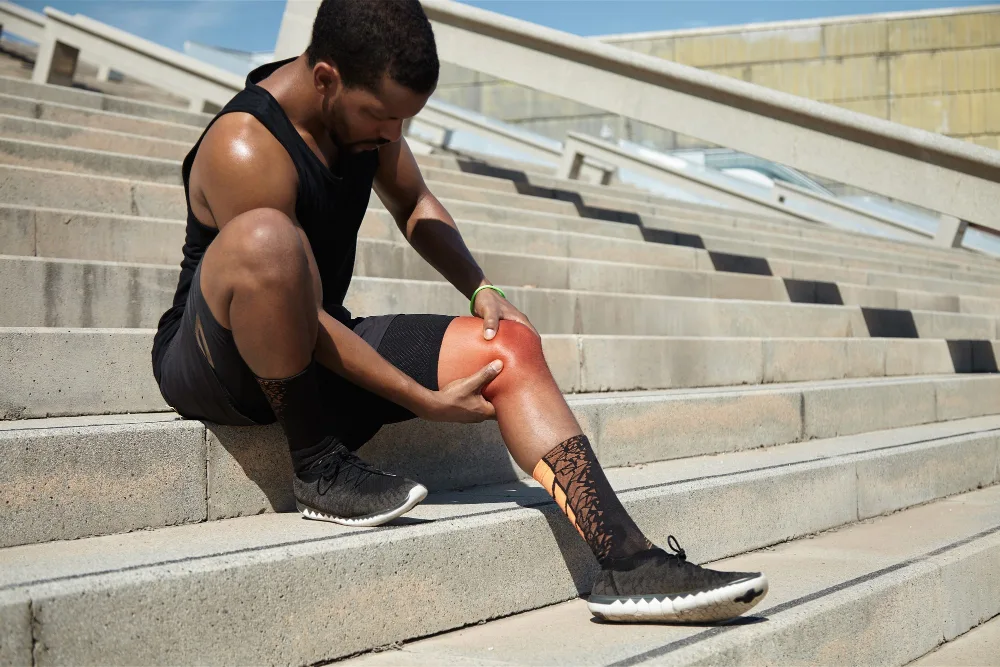Treating And Preventing Hip Flexor Strains
Category: Orthopedics
Hip flexor strains are a common musculoskeletal issue that can affect people across all activity levels. These injuries can cause significant discomfort, limiting mobility and interfering with daily activities. Whether you're an athlete pushing your limits or someone simply navigating a busy life, understanding how to treat and prevent hip flexor strains is essential for maintaining long-term physical well-being. At Lokmanya Hospitals, we provide comprehensive care to help you recover effectively and stay injury-free.
What Are Hip Flexor Strains?
The hip flexors are a group of muscles responsible for lifting the leg and stabilizing the hip joint. Key muscles in this group include:
- Iliopsoas: The primary muscle for hip flexion.
- Rectus Femoris: A muscle in the quadriceps group that aids in hip movement.
- Sartorius: The body's longest muscle, assisting in hip and knee actions.
A strain occurs when these muscles are overstretched or partially torn. Symptoms often include:
- Sharp pain in the hip or groin area.
- Reduced range of motion and stiffness.
- Swelling, tenderness, or bruising in severe cases.
What Causes Hip Flexor Strains?
Several factors contribute to hip flexor strains, such as:
- Overuse: Engaging in repetitive activities like running, cycling, or kicking.
- Sudden Movements: Quick directional changes, common in sports.
- Muscle Imbalance: Weakness in the hip flexors or tightness in opposing muscles.
- Inadequate Warm-Up: Exercising without proper preparation can lead to injury.
These factors often combine, placing undue stress on the muscles, leading to strains.
How to Treat Hip Flexor Strains
Effective treatment focuses on reducing pain, promoting healing, and restoring mobility. At Lokmanya Hospitals, our multidisciplinary approach ensures every patient receives personalized care.
Immediate Care
- Rest: Limit activities that stress the hip flexors to avoid aggravating the injury.
- Ice Application: Apply ice packs for 15-20 minutes every few hours to reduce inflammation.
- Compression and Elevation: Wrapping the affected area with a compression bandage and keeping the leg elevated can help manage swelling.
Physical Rehabilitation
- Physical Therapy: Our experts design exercises to strengthen hip muscles, improve flexibility, and restore function.
- Pain Management: Anti-inflammatory medications or topical treatments may be used to alleviate discomfort.
Advanced Treatments
For severe strains or recurrent injuries, Lokmanya Hospitals offers cutting-edge solutions:
- Ultrasound Therapy: Stimulates healing by improving blood flow and reducing inflammation.
- Surgical Intervention: Rarely necessary, surgery may be performed to repair extensive muscle tears.
Preventing Hip Flexor Strains
Preventive care is the best defense against hip flexor injuries. Incorporate these strategies into your routine to minimize risk:
- Dynamic Warm-Ups
Preparing your body with light cardio and mobility exercises ensures your muscles are ready for activity. - Strength Training
Regular exercises, such as planks, lunges, and leg raises, can fortify the hip flexor muscles and improve overall stability. - Stretching Routines
Include both dynamic and static stretches to maintain muscle flexibility and reduce tension.
Examples: Kneeling hip flexor stretch, butterfly stretch. - Posture Awareness
Poor posture, especially during prolonged sitting, can weaken hip flexors. Take breaks to stand, walk, or stretch throughout the day. - Gradual Progression
Avoid sudden increases in the intensity or duration of physical activity. Gradual progression minimizes the strain on your muscles.
Why Choose Lokmanya Hospitals for Hip Flexor Care?
Lokmanya Hospitals stands at the forefront of musculoskeletal health, offering specialized care for hip-related injuries. Our team of orthopedic experts provides:
- Precise Diagnoses: Advanced imaging and physical assessments to identify the extent of the injury.
- Customized Treatment Plans: A combination of therapies tailored to your recovery goals.
- Rehabilitation Support: Guidance for safely returning to activities and preventing future injuries.
With state-of-the-art facilities and a patient-centered approach, we ensure your recovery journey is smooth and effective.
Conclusion
Hip flexor strains, though common, are manageable with the right approach to treatment and prevention. By prioritizing muscle care, incorporating strength and flexibility exercises, and seeking expert assistance, you can recover fully and prevent future injuries. Lokmanya Hospitals is here to provide exceptional care and guidance every step of the way.
Don’t let a hip flexor strain hold you back. Contact Lokmanya Hospitals today to schedule a consultation and take the first step toward a stronger, healthier you.

.webp)





